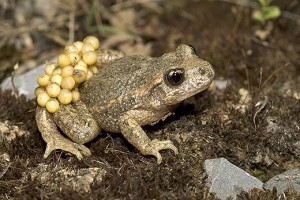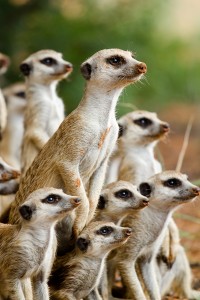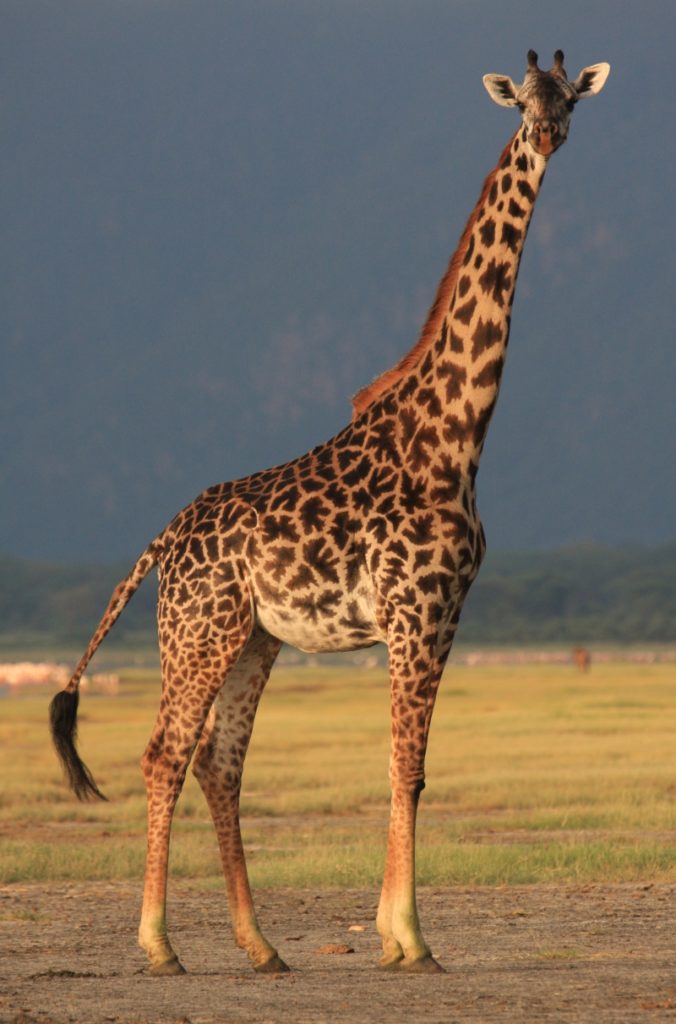- African wild dog dispersal, demography, and conservation
In collaboration with the Botswana Predator Conservation Program, we study the population dynamics of African wild dogs in the Okavango Delta.
The African wild dog (Lycaon pictus) is Africa’s most endangered large carnivore and is listed as endangered in the IUCN Red List. The species was formerly distributed throughout sub-Sahara Africa but today it has disappeared from most of its former range. Less than 6’000 free-ranging individuals survive in the wild, and the species has been given very high conservation priority. One major threat to the survival of the species is the loss and
- Conservation biology of amphibians and reptiles in Switzerland
Supervised by Benedikt Schmidt
 Human activity is the cause of the ongoing biodiversity crisis. Our goal is to do research on the conservation biology of amphibians and reptiles because we would like to understand how conservation problems can be solved and thereby population declines halted or even reversed. In doing so, we would like to contribute to evidence-based conservation.
Human activity is the cause of the ongoing biodiversity crisis. Our goal is to do research on the conservation biology of amphibians and reptiles because we would like to understand how conservation problems can be solved and thereby population declines halted or even reversed. In doing so, we would like to contribute to evidence-based conservation.We study the dynamics and genetic structure of metapopulations that live in man-made landscapes. We would like to know how the metapopulations function and how they respond to changes in the landscape (e.g., is there an
- Individual strategies, group dynamics and population regulation in cooperative breeders
 Many species live in socially and spatially structured populations, and the behavioural, evolutionary, and demographic aspects of sociality have been the focus of much theoretical and empirical research. One major shortcoming of the empirical work, due mainly to practical considerations, has been its focus on already-established social groups (either in captivity or in the wild) and its omission of complexity in between-group processes, such as dispersal and new group formation. Natal dispersal of individuals, immigration into existing groups, and new
Many species live in socially and spatially structured populations, and the behavioural, evolutionary, and demographic aspects of sociality have been the focus of much theoretical and empirical research. One major shortcoming of the empirical work, due mainly to practical considerations, has been its focus on already-established social groups (either in captivity or in the wild) and its omission of complexity in between-group processes, such as dispersal and new group formation. Natal dispersal of individuals, immigration into existing groups, and new - Kalahari Biodiversity Project
The Kalahari Biodiversity Project represents a significant advancement in ecological research at the Kalahari Research Centre. This initiative broadens the scope from a single species focus, such as the cooperative breeding in meerkats, to a more comprehensive ecological assessment to both supplement ongoing research at the centre and investigate biodiversity patterns at a broader scale. A pivotal development in this expansion was the acquisition of an additional 40 km² of adjacent farmland by the Kalahari Research Trust, made possible by the financial support of Zoo Zurich in collaboration with the University of Zurich, enlarging the study area to a
- Past research projects
- Population persistence under environmental change across space and time: a unified framework
Predicting population dynamics accurately requires considering environmental and demographic aspects, such as the spatiotemporal pattern of environmental change, reaction norms of life-history rates to this change, covariation among life-history rates, and density feedback on these rates. Studies on spatially structured populations (metapopulations) usually ignore this complexity.
In this project, we build a metapopulation model that can accommodate the four demographic aspects. By simulating different life-history strategies and alternately excluding aspects from the model, we generate hypotheses on how each aspect affects population projections under environmental change. Then, we test the hypotheses on data from natural and experimental populations.
 The gentle, iconic giraffe indicates the health of African savanna ecosystems, home to some of the most spectacular displays of wildlife in the world. But savanna ecosystems are in serious trouble. Habitat loss, illegal hunting, and disease are decimating savanna wildlife. Giraffe numbers have declined drastically to fewer than 100,000 across the African continent.
The gentle, iconic giraffe indicates the health of African savanna ecosystems, home to some of the most spectacular displays of wildlife in the world. But savanna ecosystems are in serious trouble. Habitat loss, illegal hunting, and disease are decimating savanna wildlife. Giraffe numbers have declined drastically to fewer than 100,000 across the African continent.Since 2011, Project GIRAFFE, led by Monica Bond and Derek Lee, has been monitoring births, deaths, and movements of 3,100 individual giraffes in an area over 1,500
- Resurrecting population responses to past environmental change
In collaboration with:
Diego Fontaneto (Water Research Institute, National Research Council of Italy)
- Resurrecting population responses to past environmental change

 Human activity is the cause of the ongoing biodiversity crisis. Our goal is to do research on the conservation biology of amphibians and reptiles because we would like to understand how conservation problems can be solved and thereby population declines halted or even reversed. In doing so, we would like to contribute to evidence-based conservation.
Human activity is the cause of the ongoing biodiversity crisis. Our goal is to do research on the conservation biology of amphibians and reptiles because we would like to understand how conservation problems can be solved and thereby population declines halted or even reversed. In doing so, we would like to contribute to evidence-based conservation.
